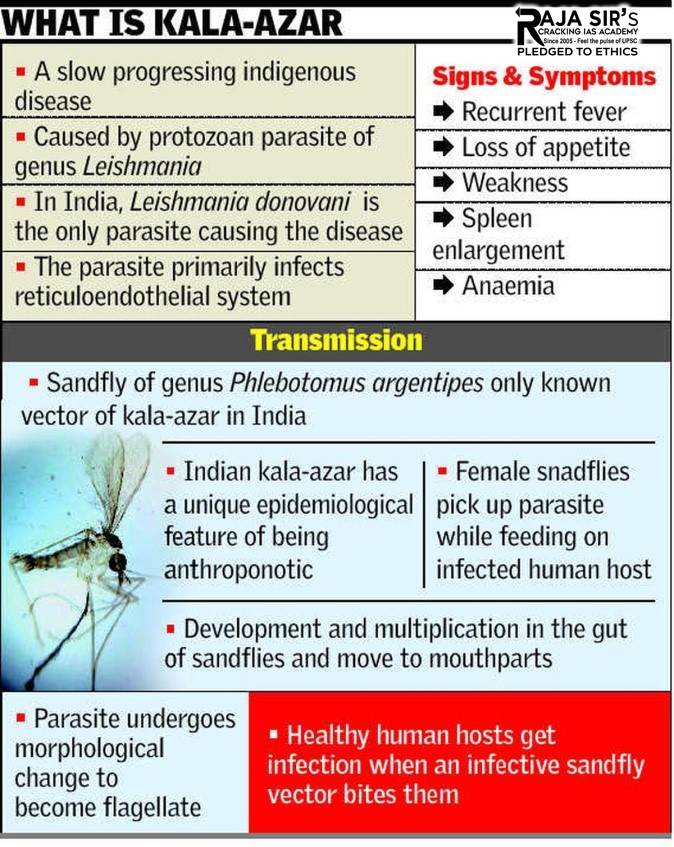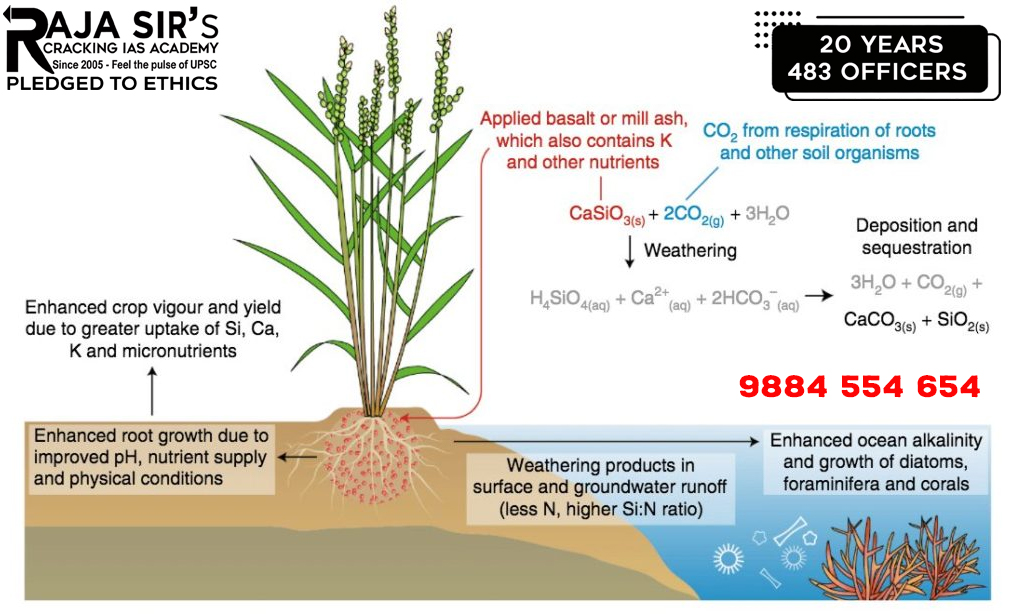- Home
- Prelims
- Mains
- Current Affairs
- Study Materials
- Test Series
OCTOBER 20, 2025
Department of Chemicals & Petrochemicals jointly with FICCI organised 13th Edition of “India Chem 2024” in Mumbai
‘India Chem’ is one of the largest composite events of the industry in the Asia-Pacific region and comprises an International Conference and Exhibition.
India’s chemical and petrochemical industry
- Chemical and petrochemical industry in India forms an integral part of the growing Indian manufacturing industry
- Market segment
- Bulk chemical: They are chemicals produced in large quantities but with lower value.
- They could be alkali, organic and inorganic. They significantly cater to the downstream industries
- Petrochemicals: Also known as petroleum distillates, these chemicals are derived from petroleum and natural gas by refining.
- It includes polymers, and synthetic fibres, performance plastics and others.
- The production-consumption gap in these has remained negative over the years
- Specialty Chemicals: Chemicals with high value but low production volume are considered specialty chemical.
- For examples, surfactants, textile chemicals, paints and coating, dyes, agrochemicals and others.
- Economic significance: Contributes over 9% to manufacturing gross value added and 7% to total exports.
- Growth potential: Currently it is valued at about worth$178 billion and is projected to surpass $300 billion by 2028 and is on track to reach $1 trillion by 2040.
|
Initiatives taken to promote the chemical and petrochemical industry
|
Emissions from Rocket and satellite launches pose growing environmental threat
In 15 years, the rockets launched per year has nearly tripled, and the satellites orbiting the planet has increased 10 times.
- Space debris re-entry has doubled in decade and debris’ atmospheric burning creates toxic emissions.
Atmospheric impact of rocket launches
- Alumina (Al2O3) and black carbon (soot): Al2O3 and soot absorb and trap the long-wave radiation from Earth, thus resulting in warming.
- A warmer stratosphere results in faster ozone depletion by speeding up the chemical reactions.
- Ozone depletion: Alumina, chlorine, nitrogen oxides, etc in rocket launch plumes all contribute to stratospheric ozone depletion.
- The Montreal Protocol for protection of the ozone, does not address rocket emissions.
- Carbon dioxide: Each rocket launch produces 50-75 tonnes of CO2 per passenger, significantly higher than airplane flights (1-3 tonnes of CO2).
- Upper atmospheric-level pollution: ~2/3rd of propellant exhaust is released into the stratosphere (12-50 km) and mesosphere (50-85 km), where it persists for at least 2-3 years.
- Even “green rockets,” propelled by liquid hydrogen, produce water vapor, which is a greenhouse gas at high altitudes.
- Metallic ash: May disrupt Earth’s magnetic field, allowing more harmful cosmic radiation to reach the planet''s surface.
|
Measures for controlling Pollution
|
Ramgarh Vishdhari Tiger Reserve
Tigress’ death and a missing cub has hit reintroduction plan in Ramgarh Vishdhari reserve
- Status: It is the fourth tiger reserve in Rajasthan state and the 52nd tiger reserve in the country.
- Location: Bundi district, Rajasthan (southeastern part of Rajasthan).
- Represents both Vindhyan and Aaravalli elements.
- It is in continuation with the buffer area of Ranthambore tiger reserve and Mukundara Hills tiger reserve.
- River: Mez, tributary of the Chambal River, passes through it.
- Major tree species: Dhok, Khair, Amaltas, etc.
- Major Animal species: Tigers, Panthers, Sloth Bears, etc.
Pyromes
Forest fire CO2 emissions increased 60% globally since 2001: A Study.
- The study separated forest and non-forest fires into 12 ecoregion pyromes to analyze CO2 emissions.
- ‘Pyromes’ are defined as regions where forest fire patterns are affected by similar environmental, human, and climatic factors, thereby revealing the elements pushing recent increases in forest fires.
- The term is a blend of "pyro" (fire) and "biomes," reflecting that fire behaves differently across various ecological zones.
- Significance: help scientists and policymakers assess fire risk, predict the impacts of climate change on fire behavior and design fire management strategies.
Shiromani Gurdwara Parbandhak Committee (SGPC)
- Shiromani Gurdwara Parbandhak Committee (SGPC) was in the news due to election issues.
- The SGPC is the apex governing body of all Sikh gurdwaras in Punjab, Himachal Pradesh, and the Union Territory of Chandigarh.
- Established in 1920 in Amritsar, the SGPC initially aimed to administer the Darbar Sahib and other historically significant gurdwaras.
- In the 19th century, Punjab, under British control, experienced a rise in Christian missionary activities and the influence of the Arya Samaj movement. In response, the Singh Sabha movement emerged within the Sikh community to combat the perceived “degradation of Sikh thought and principles”.
- Despite these movements, control of the Darbar Sahib and other gurdwaras remained with powerful mahants (priests), who had tacit support from the British. These mahants treated the gurdwaras as personal fiefdoms, encouraging practices that violated Sikh tenets, such as idol worship and discrimination.
- The SGPC was established to replace the unpopular mahants and ensure Sikh gurdwaras were governed according to Sikh religious principles. After its creation, the SGPC faced resistance, often leading to violent confrontations, but it eventually gained control of many gurdwaras.
- The British passed the Gurdwaras Act of 1925, legally recognising the SGPC and turning it into a democratic body for the governance of Sikh gurdwaras.
|
The Gurdwara Election Commission (GEC) is a statutory body under the 1925 Act. The Union Home Ministry appoints the Chairman and coordinates elections with the Punjab government. |
Kala Aazar and its status in India
- India is about to eliminate Kala-azar as a public health problem, with cases under one in 10,000 for two consecutive years (WHO parameters for elimination certification).
- Also known as visceral leishmaniasis. It is caused by the protozoan parasite Leishmania donovani.
- It is the second deadliest parasitic disease after malaria in India.
- Transmission: Through the bite of an infected female sandfly, primarily Phlebotomus argentipes.
- Affected Population: Often linked to malnutrition, poor hygiene and weak immune systems.
- Symptoms: Irregular bouts of fever, significant weight loss, swelling of the spleen and liver, and severe anaemia. If untreated, it can be fatal within two years.
- Treatment: WHO advises combining two or more drugs to reduce the risk of treatment failure.
|
Historically, Bihar, Jharkhand, West Bengal, and parts of Uttar Pradesh have seen the highest number of Kala-azar cases, with Bihar alone accounting for over 70% of India’s cases. |
 Global Initiatives
Global Initiatives
- The WHO’s New Roadmap for 2021–2030 aims to prevent, control, eliminate, and eradicate 20 neglected tropical diseases (NTDs), including Kala-azar, by 2030.
- WHO Global Programme to Eliminate Lymphatic Filariasis (GPELF), which targets the elimination of lymphatic filariasis, onchocerciasis, and Kala-azar through the Mass Drug Administration (MDA).
India’s Initiatives
- The Indian government aimed to eliminate Kala-azar by 2023 by building pucca houses through the PM-AWAS Yojana, rural electrification, testing, treatment, and regular high-level reviews.
- The National Kala-azar Elimination Programme was initially set under the National Health Policy-2002, targeting elimination by 2010, which is now revised to 2023.
- India signed a Tripartite Memorandum of Understanding (MoU) with Bangladesh and Nepal to eliminate kala-azar from the Southeast Asia Region (SEAR).
- Programmatic activities for kala-azar elimination are currently carried out under the National Vector Borne Disease Control Programme (NVBDCP), which is part of the National Health Mission (NHM).
Basaltic Dust to enhance carbon capture
Basalt dust as organic fertiliser can enrich soil & accelerate carbon sequestration.
Benefits of Basaltic Dust
- Mitigate climate change by promoting a natural process called enhanced weathering, which captures CO2 from the atmosphere and stores it in the form of stable carbonates.
- Adding rock dust to soil also improves its fertility and crop yields.
- Basalt powder undergoes decomposition in the soil solution, resulting in the formation of some weak acids and an increase in soil pH.
|
Basaltic rock, a kind of volcanic rock, is rich in minerals such as calcium and magnesium. It is found in parts of Maharashtra and Gujarat (where the volcanic Deccan Traps are located) and Jharkhand and West Bengal (where the Rajmahal Traps are situated). |

Spotted Locust
- In Idukki (Kerala) farmers face agricultural crisis due to an infestation of spotted locusts.
- Defence mechanism: Bright warning colours to ward off predators. They eject toxic foam as a defence mechanism. Additionally, they can produce a sharp rasping sound as part of their defence.
- Movement: They have slow movement, thus easy to catch. It typically jumps low and does not fly.
Causes of Locust Swarming
- Gregarisation: Triggered by excessive rainfall, flooding, and sometimes cereal crop irrigation.
- High Rainfall: Leads to lush foliage, increasing nymph numbers and causing them to congregate.
- Flooding: Expands breeding grounds.
- Temperature: Lower temperatures increase nutrient assimilation efficiency and slower growth.
- Soil Moisture: Allows continuous egg-laying post-floods during dry seasons.
- Serotonin Surge: Sight, smell & touch of other locusts lead to switching genes to the gregarious phase.
- Hopper Contact: Leads to gregarisation and group movement in search of food.
Gliese 229B
- Geliese consists of two brown dwarfs, now designated Gliese 229Ba and Gliese 229Bb.
- These two objects orbit each other closely, separated by 16 times the distance between the Earth and the moon, completing an orbit every 12 days.
- They circle a small dwarf star located 19 light-years from our solar system in the constellation Lepus.
|
Brown Dwarfs
|
8 years of Regional Connectivity Scheme (RCS) – UDAN
PM inaugurated Saharanpur, Rewa and Ambikapur airports in Uttar Pradesh, Madhya Pradesh, and Chhattisgarh respectively, as part of the celebrations under RCS-UDAN.
Key Features of the Scheme
- Nodal Ministry: Ministry of Civil Aviation
- Genesis: Launched in 2016, a vital component of National Civil Aviation Policy (NCAP) 2016.
- The first RCS-UDAN flight was inaugurated in 2017, connecting Shimla to Delhi.
- Type: Central Sector Scheme
- Purpose: To improve infrastructure and connectivity in India, especially in remote and underserved regions, making air travel affordable for the masses.
- Benefits
- Subsidised seats for passengers: Travel fee is capped (initially it was capped to Rs.2500- per passenger)
- Support to Airlines: Government compensates in the form of Viability Gap Funding (VGF) to airlines for losses due to low fares.
- Regional Connectivity Fund (RCF): It facilitates the self-financing mechanism of the scheme by funding the VGF through a levy on certain domestic flights.
- Market-driven model: Airlines assess demand on specific routes and submit proposals during bidding rounds.
- Recent changes: Currently 5th phase of the scheme is ongoing. The distance gap of 600 km and Airfare Caps is reduced VGF is enhanced
- Implementing Agency: Airports Authority of India (AAI)
|
Key achievements of the scheme
|









 Latest News
Latest News
 General Studies
General Studies